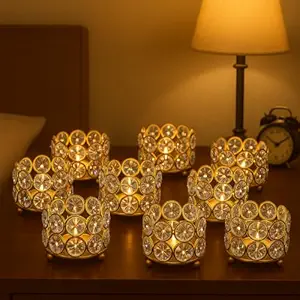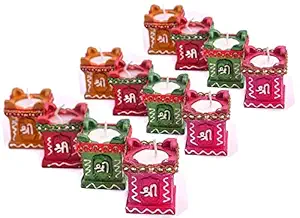હે અમે આવ્યા રમવાને રાસ
માડી મને રાસ રમાડો રમાડો
માડી મને રાસ રમાડો
કુહુ કુહુ કરતિ કોયલ બોલેને મોર કરે ટહુકાર
રંગના રસિયા રાસે રમવાને વહેલા વહેલા આવ
હે નવ કરસો નવ કરસો માડી નિરાશ
માડી મને રાસ રમાડો રમાડો
માડી મને રાસ રમાડો
હે અમે આવ્યા હે અમે આવ્યા રમવાને રાસ
માડી મને રાસ રમાડો રમાડો
માડી મને રાસ રમાડો
શરદપૂનમન રાતલડી ને ચન્દ્ર ચડ્યો આકાશ
રંગ ભરેલી રાતલડી ને તારલિયા ની ભાત
હૈ છાયો એવો છાયો એવો અમર ઉલ્લાસ
માડી મને રાસ રમાડો રમાડો
માડી મને રાસ રમાડો
હૈ અમે આવ્યા અને આવ્યા રામવાને રાસ
માડી મને રાસ રમાડો રમાડો
માડી મને રાસ રમાડો
Overview of “Ame Avya Ramva Ne Raas”
Title Meaning
“Ame Avya Ramva Ne Raas” translates roughly to “We have come to play the Raas.” It evokes the devotional gathering, dance, and joy associated with worship of the Mother Goddess Amba.
Context & Tradition
This song is sung during Navratri by Garba dancers, invoking the divine Mother. The tradition comprises singing, dancing, rhythmic clapping as part of Gujarati devotional folk culture. :contentReference[oaicite:0]{index=0}
Lyrics & Themes
The lyrics reference descent from the heavens, adornments like sandal paste, the call to dance in sacred circles, feelings of joy, devotion, and invite the Goddess to descend into the raas circle. :contentReference[oaicite:1]{index=1}
When & Where Sung
It is performed during Navratri nights in Garba gatherings in Gujarat and by Gujaratis elsewhere. Also appears in recordings, YouTube Garba mixes, and live Raas-Garba events. :contentReference[oaicite:2]{index=2}
Significance to Devotees
Devotees use this song as an expression of faith, community bonding, cultural identity, and worship of Goddess Amba. It often uplifts spirit and encourages participation in collective devotion. :contentReference[oaicite:3]{index=3}
Lyrics Structure & Style
Refrain & Chorus Patterns
The song uses repeated refrains like “Ame Avya Ramva Ne Raas” and “Madi Mane Raas Ramado” to build rhythm and make it easy for groups to join in song and dance. :contentReference[oaicite:4]{index=4}
Imagery & Metaphors
Imagery of the sky, moonlight, sandal paste (chandan), descent from heavens, and lights (chandlo) are used to evoke purity, festivity, and a divine mood. :contentReference[oaicite:5]{index=5}
Local Dialect & Phrases
Use of Gujarati terms like “Madi”, “Raas”, “Chandlo”, “Kumkum”, adds local flavor, helps in connecting with speakers and preserving regional culture. :contentReference[oaicite:6]{index=6}
Progression & Emotional Arc
The lyrics move from invitation, praise, and sacred imagery towards lively exhortations to dance, community rejoicing, and expressing longing for the Mother’s presence. :contentReference[oaicite:7]{index=7}
Repetition & Rhythm
Repetition of lines and rhythmic syllables support the beat, help dancers anticipate steps, and maintain energy through the Garba / Raas. :contentReference[oaicite:8]{index=8}
Musical & Performance Elements
Instruments & Sound
Traditional Garba instruments accompany the song: dhol, manjira / claps, possibly harmonium or local folk percussions. Live performances typically amplify these. :contentReference[oaicite:9]{index=9}
Tempo & Mood Shifts
The song often starts slower or moderate, setting devotional tone, then builds to more energetic pace during chorus or Raas invitation. The mood shifts from solemnity → joy. :contentReference[oaicite:10]{index=10}
Dance Cues & Movement
Lyrics include cues for dance: ‘Madi mane raas ramado’, ‘Kumkum pagle etc.,’ which suggest steps, movement in circles, bringing everyone together in synchrony. :contentReference[oaicite:11]{index=11}
Audience Participation
Refrains and call-and-response style allow audiences to join in; people often sing and dance together, crossing age groups. This interaction enhances communal devotional experience. :contentReference[oaicite:12]{index=12}
Visual Elements & Costuming
Garba nights feature colorful outfits (chaniya-choli), mirror work, lighting, decorative elements that match lyrics’ imagery like moonlight, lotus, sandal, etc. This enhances atmosphere.
Recording & Variations
There are recorded versions on platforms (Spotify etc.), live variations in how people perform the song — slight tempo, instrument arrangement changes. :contentReference[oaicite:13]{index=13}
Festival & Cultural Significance
Role during Navratri
This song is an integral part of Navratri celebrations. It is used to invoke the Mother Goddess and to provide musical rhythm during Garba and Raas dance during the nine nights. :contentReference[oaicite:14]{index=14}
Community Bonding
The song helps unite devotees in dance and worship; strengthens social bonds across generations during Garba nights. :contentReference[oaicite:15]{index=15}
Preserving Folk Tradition
These songs help preserve Gujarati folk lyrics, oral tradition, and cultural identity. They pass from elders to youth. :contentReference[oaicite:16]{index=16}
Emotional Upliftment
Singing and dancing this song gives emotional release — joy, devotion, unity. It creates many positive feelings among participants. :contentReference[oaicite:17]{index=17}
How to Use & Share
Lyrics Translation
Providing translations (Gujarati → English / Hindi) helps non-Gujarati speakers understand meaning; increases site reach and dwell time. (Useful for SEO too.)
Printable Lyrics & Lettering
Offering printable lyric sheets or downloadable PDFs allows devotees to sing along offline, use for group events, share. Enhances user engagement and retention.
Audio / Video Embeds
Embedding audio / video players (YouTube, Spotify) in the page helps users listen in place; increases time on page and chances of shares. :contentReference[oaicite:18]{index=18}
Performance & Garba Tips
Provide suggestions for when to start singing this song in a Garba lineup, which parts are good for audience participation or lead verses. Helps those hosting Garba events.
Credits & Artist Information
Mentioning singer(s), composer(s), album info helps users search by artist name; useful in SEO (people search with artist). For this song Musa Paik etc. :contentReference[oaicite:19]{index=19}
“Ame Avya Ramva Ne Raas” translates roughly to “We have come to play the Raas.” It evokes the devotional gathering, dance, and joy associated with worship of the Mother Goddess Amba.
This song is sung during Navratri by Garba dancers, invoking the divine Mother. The tradition comprises singing, dancing, rhythmic clapping as part of Gujarati devotional folk culture. :contentReference[oaicite:0]{index=0}
The lyrics reference descent from the heavens, adornments like sandal paste, the call to dance in sacred circles, feelings of joy, devotion, and invite the Goddess to descend into the raas circle. :contentReference[oaicite:1]{index=1}
It is performed during Navratri nights in Garba gatherings in Gujarat and by Gujaratis elsewhere. Also appears in recordings, YouTube Garba mixes, and live Raas-Garba events. :contentReference[oaicite:2]{index=2}
Devotees use this song as an expression of faith, community bonding, cultural identity, and worship of Goddess Amba. It often uplifts spirit and encourages participation in collective devotion. :contentReference[oaicite:3]{index=3}
The song uses repeated refrains like “Ame Avya Ramva Ne Raas” and “Madi Mane Raas Ramado” to build rhythm and make it easy for groups to join in song and dance. :contentReference[oaicite:4]{index=4}
Imagery of the sky, moonlight, sandal paste (chandan), descent from heavens, and lights (chandlo) are used to evoke purity, festivity, and a divine mood. :contentReference[oaicite:5]{index=5}
Use of Gujarati terms like “Madi”, “Raas”, “Chandlo”, “Kumkum”, adds local flavor, helps in connecting with speakers and preserving regional culture. :contentReference[oaicite:6]{index=6}
The lyrics move from invitation, praise, and sacred imagery towards lively exhortations to dance, community rejoicing, and expressing longing for the Mother’s presence. :contentReference[oaicite:7]{index=7}
Repetition of lines and rhythmic syllables support the beat, help dancers anticipate steps, and maintain energy through the Garba / Raas. :contentReference[oaicite:8]{index=8}
Traditional Garba instruments accompany the song: dhol, manjira / claps, possibly harmonium or local folk percussions. Live performances typically amplify these. :contentReference[oaicite:9]{index=9}
The song often starts slower or moderate, setting devotional tone, then builds to more energetic pace during chorus or Raas invitation. The mood shifts from solemnity → joy. :contentReference[oaicite:10]{index=10}
Lyrics include cues for dance: ‘Madi mane raas ramado’, ‘Kumkum pagle etc.,’ which suggest steps, movement in circles, bringing everyone together in synchrony. :contentReference[oaicite:11]{index=11}
Refrains and call-and-response style allow audiences to join in; people often sing and dance together, crossing age groups. This interaction enhances communal devotional experience. :contentReference[oaicite:12]{index=12}
Garba nights feature colorful outfits (chaniya-choli), mirror work, lighting, decorative elements that match lyrics’ imagery like moonlight, lotus, sandal, etc. This enhances atmosphere. <!-- though not in lyric page directly, typical Garba tradition supports this -->
There are recorded versions on platforms (Spotify etc.), live variations in how people perform the song — slight tempo, instrument arrangement changes. :contentReference[oaicite:13]{index=13}
This song is an integral part of Navratri celebrations. It is used to invoke the Mother Goddess and to provide musical rhythm during Garba and Raas dance during the nine nights. :contentReference[oaicite:14]{index=14}
The song helps unite devotees in dance and worship; strengthens social bonds across generations during Garba nights. :contentReference[oaicite:15]{index=15}
These songs help preserve Gujarati folk lyrics, oral tradition, and cultural identity. They pass from elders to youth. :contentReference[oaicite:16]{index=16}
Singing and dancing this song gives emotional release — joy, devotion, unity. It creates many positive feelings among participants. :contentReference[oaicite:17]{index=17}
Providing translations (Gujarati → English / Hindi) helps non-Gujarati speakers understand meaning; increases site reach and dwell time. (Useful for SEO too.)
Offering printable lyric sheets or downloadable PDFs allows devotees to sing along offline, use for group events, share. Enhances user engagement and retention.
Embedding audio / video players (YouTube, Spotify) in the page helps users listen in place; increases time on page and chances of shares. :contentReference[oaicite:18]{index=18}
Provide suggestions for when to start singing this song in a Garba lineup, which parts are good for audience participation or lead verses. Helps those hosting Garba events.
Mentioning singer(s), composer(s), album info helps users search by artist name; useful in SEO (people search with artist). For this song Musa Paik etc. :contentReference[oaicite:19]{index=19}


